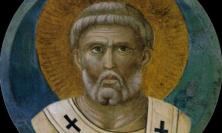Over almost fifty years, Ian Linden has made an outstanding contribution to aspects of African Studies in particular and the development of radical Catholic social thought in general. A former Director of the Catholic Institute for International Relations, he has maintained close friendships and funding links with many of those who have struggled for human rights, social justice and development in conflict zones. From South Africa to East Timor, Latin America to Manila, this book combines insights gleaned from rapacious reading with prudential judgements based on political reality and personal narratives in the face of breathtaking abuses by distorted states and unaccountable markets.
It is fortunate that this work emanates from the Hurst Publishing House: Linden’s argument is consequently placed in the public sphere where it belongs, rather than being simply confined within the faith communities and familiar religious imprints. It teases out the religious aspects of global affairs that the academy is now being forced to recognise.
Global Catholicism takes its inspiration from the texts and theological consequences of the Second Vatican Council. This ‘new vision’ was presaged in the work of Jesuit and Dominican academics in Europe, but formed the foundations for the decline of a ‘Eurocentric’ church. This Church now stands at the front end of a twenty first century with long-standing issues (‘the crisis of the celibate Priesthood’) to address and new ones (‘environment and climate change’) still to be adequately considered.
Key sections of the book describe a history of the Council itself and assessments of the ‘Church of the Poor in Latin America’, ‘radicals and liberals in the Philippines and South Africa’ and ‘Inculturation and Dialogue with Islam’. Linden’s sweep is impressive. The sense that we are being walked through conferences and debates at which the author himself has been present is recurring, and at times there are hints that the book is also forming a personal tour de force of autobiographical character. Linden’s heroes are those who have fought for justice in the poorest parts of the planet and especially against the right wing insurgencies and states of the European Cold War period. These heroes include the great Archbishop of Durban, Denis Hurley, the activists and theologians of the Latin American base communities, the Women Religious who have made an awesome international contribution, and the millions of citizens who rose up on Manila’s streets to depose President Marcos.
As someone born after the Second Vatican Council, however, Global Catholicism raises for me a number of major questions for future reflection. At one level the book is a record of four decades of the textual debates, conferences, meetings and resolutions which delineate the debate as to what should constitute the Church’s official position on justice. While such scoping is essential it does not fully link words with budgetary allocations, nor with institutional impact for social change. Thus while 20 women praying in Rome for a particular vision of the Church during the Council is notable for the fact that they included the greats Barbara Ward and Dorothy Day, it barely merits a mention when the institutional impact of the Caritas International federation is under-described, and the globalisation and radicalisation of Catholic higher education hardly noted; likewise some Episcopal letters and statements which are judged to be important simply because they were written. Naturally, the South African Kairos document gets a mention but, effectively reflecting the mainstream concerns of the post-1945 period, detailed insights into the Catholic encounter with the narratives of international Islam, Christian Orthodoxy and Asia beyond Manila need further elucidation in a subsequent book.
But perhaps most striking is the essential absence of consideration of three facets of the period under consideration which throw up sharp questions for the paradigm of Catholic ‘left’-‘right’ analysis that runs through the prose. A number of East Asian countries went through periods of intensifying Christianisation in this period, forming what has even been decribed as a ‘Christian Arc’. Some of them combined this with striking economic growth that, according to several studies of the period, overshadowed many of the modernisation, dependency and participatory models of governance that run throughout the varying Catholic social mindsets. Secondly, a series of recent social science studies have suggested that the immediate call to conversion of Pentecostal Churches in the third world has, by inculcating new relationship and work behaviours among converts, ameliorated poverty by increasing household incomes. While this may be a form of ‘false consciousness’, women in particular are said to have found these developments empowering as they no longer have to share partners with drink, drugs or female competitors. Such visible change has been said to be more liberating than any number of motions passed in long-winded base community meetings or even the capture of the Nicaraguan state by the Sandinistas. Third, for all the book’s comment on the status of the Church as predominantly Hellenistic and Eurocentric – which, Linden argues, has eroded the Church’s authenticity on that continent and hindered its credibility elsewhere – a further question must be asked about the global South in light of this. Is the Church in the South at risk due to the lack of depth and leverage that alternative, or even similar, models of Church have secured, and that a renewed Europeanism may aggravate?
However, while these three missing facets reflect the highly under-developed condition of the sociology and political economy of Catholicism, they are intended more as words of caution than criticism. In the work of Linden’s colleague at SOAS, Paul Gifford, could be found the kernel of a framework for their future discussion.
A few of liberal inclination will be left asking themselves further questions: how could those with a commitment to feminism, social justice, and theological change have been so easily characterised by some as not caring for the Church? And if – after all this effort – the Catholic Church remains as cautious about the radicalism of which Linden approves, then why would any new generation of liberals or change-makers bother with it? Or is it perhaps that for some parts of the Church, their interpretation of the events of the Council was a triumph of hope over reality, vision over delivery and words over deeds?
In the meantime Global Catholicism should be read by all those with an interest in the current or future patterns of one of the world’s largest social institutions. In the process they will learn much of the huge changes that it has faced and managed over the last half century.
The reviewer, Francis Davis, is Director of the Las Casas Institute on ethics, governance and social justice at Blackfriars Hall, University of Oxford. His edited collection Faith And Globalisation – Catholic Insights will be pusblished by Matthew James Publishing later this year.
![]() Find this book on Amazon
Find this book on Amazon![]() 'Thinking about the Council' - Ian Linden
'Thinking about the Council' - Ian Linden






